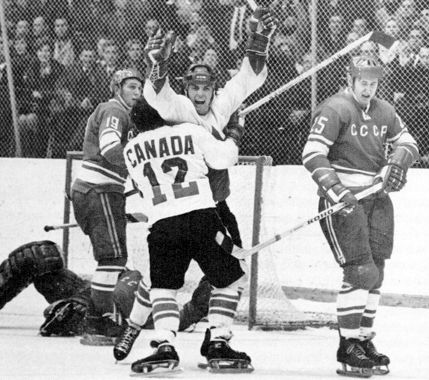Article
1972 Canada-Soviet Hockey Series (Summit Series)
For many Canadians, particularly baby boomers and Generation X, the eight-game hockey series between Team Canada and the national team of the Soviet Union in September 1972 provided the greatest moment in Canada’s sporting history. Most expected that Canada would handily defeat the Soviet Union, but this confidence quickly disappeared when Canada lost the first game. The series was tied heading into the final game in Moscow, which ended in dramatic fashion, with Paul Henderson scoring in the final seconds to give Canada the victory. The series became as much a Cold War political battle of democracy versus communism and freedom versus oppression as it was about hockey. The series had a lasting impact on hockey in Canada and abroad.













